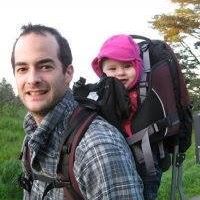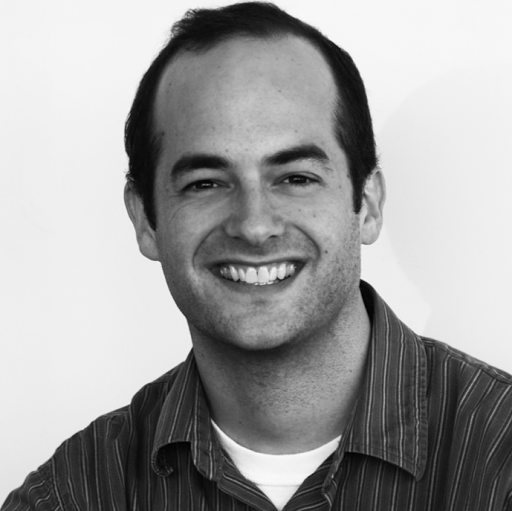John E Dueber
age ~48
from San Francisco, CA
- Also known as:
-
- John Eugene Dueber
- John Eugene Deuber
- Phone and address:
- 215 Stillings Ave, San Francisco, CA 94131
John Dueber Phones & Addresses
- 215 Stillings Ave, San Francisco, CA 94131
- 1451 7Th St, San Francisco, CA 94122 • (415)6814701
- Oakland, CA
- Wilmington, DE
- 322 Parnassus Ave APT 7, San Francisco, CA 94117
Work
-
Company:Uc berkeleyJan 2010
-
Position:Assistant professor
Education
-
Degree:Doctorates, Doctor of Philosophy
-
School / High School:University of California, San Francisco1999 to 2005
-
Specialities:Molecular Biology, Biochemistry, Philosophy, Chemistry
Skills
Molecular Biology • Protein Engineering • Synthetic Biology
Languages
English
Industries
Higher Education
Us Patents
-
Protein Logic Gates
view source -
US Patent:20050004347, Jan 6, 2005
-
Filed:Jul 3, 2003
-
Appl. No.:10/613380
-
Inventors:Wendell Lim - San Francisco CA, US
John Dueber - San Francisco CA, US
Brian Yeh - San Francisco CA, US -
International Classification:G06F019/00
G01N033/48
G01N033/50
C12N009/00 -
US Classification:530350000, 702019000, 435183000
-
Abstract:Protein logic gates are made from autoregulated fusion proteins comprising an output domain and a plurality of input domains, wherein at least one of the input domains is heterologous to the output domain, and the input domains interact with each other to allosterically and external, ligand-dependently regulate the output domain. The output domain may be constitutively active, and in the absence of the ligand, the input domains interact to inhibit the output domain. The activity of the output domain is user discretionary, and may include activities that are catalytic, label-generative, metabolic-regulative, apototic, specific-binding, etc. Multiple input domains can cooperatively regulate the fusion protein in a wide variety of functionalities, including as an OR-gate, an AND-gate, and an AND-NOT-gate. The gates may be incorporated into cells and therein used to modulate cell function.
-
Use Of Synthetic Scaffolds For The Production Of Biosynthetic Pathway Products
view source -
US Patent:20110008829, Jan 13, 2011
-
Filed:Feb 26, 2009
-
Appl. No.:12/918725
-
Inventors:John E. Dueber - Oakland CA, US
Jay D. Keasling - Berkeley CA, US
Gabriel C. Wu - Daly City CA, US
Ghulam Reza Kahn Malmirchegini - Livermore CA, US -
International Classification:C12P 21/02
C07H 21/00
C12N 15/63
C12N 1/21 -
US Classification:435 681, 536 231, 536 232, 4353201, 43525233
-
Abstract:The present invention provides methods of producing a product or product precursor of a biosynthetic pathway in a genetically modified host cell. The present invention also provides genetically modified host cells comprising nucleic acids encoding a scaffold polypeptide and nucleic acids comprising nucleotide sequences encoding two or more enzymes in a biosynthetic pathway. The present invention further provides nucleic acids comprising nucleotide sequences encoding scaffold polypeptides, for use in a subject method.
-
Novel Nucleic Acid Constructs Containing Orthogonal Site Selective Recombinases (Ossrs)
view source -
US Patent:20120135524, May 31, 2012
-
Filed:Apr 15, 2011
-
Appl. No.:13/088288
-
Inventors:Joshua M. Gilmore - Emeryville CA, US
J. Christopher Anderson - San Francisco CA, US
John E. Dueber - San Francisco CA, US -
Assignee:THE REGENTS OF THE UNIVERSITY OF CALIFORNIA - Oakland CA
-
International Classification:C12N 15/01
C12N 15/70
C12N 1/21
C12N 15/11 -
US Classification:435441, 536 231, 4353201, 43525233
-
Abstract:The present invention provides for a recombinant nucleic acid comprising a nucleotide sequence comprising a plurality of constructs, wherein each construct independently comprises a nucleotide sequence of interest flanked by a pair of recombinase recognition sequences. Each pair of recombinase recognition sequences is recognized by a distinct recombinase. Optionally, each construct can, independently, further comprise one or more genes encoding a recombinase capable of recognizing the pair of recombinase recognition sequences of the construct. The recombinase can be an orthogonal (non-cross reacting), site-selective recombinase (OSSR).
-
Tyrosine Hydroxylase Variants And Methods Of Use Thereof
view source -
US Patent:20170306301, Oct 26, 2017
-
Filed:Sep 24, 2015
-
Appl. No.:15/507711
-
Inventors:- Oakland CA, US
- Montreal, CA
John E. Dueber - San Francisco CA, US
William C. DeLoache - Oakland CA, US
Zachary N. Russ - Berkeley CA, US
P. James Scrivens - St. Constant, CA -
Assignee:The Regents of the University of California - Oakland CA
-
International Classification:C12N 9/02
C12P 17/10
C12P 13/22
C12P 13/00
C12Q 1/26
C12P 7/24 -
Abstract:The present disclosure provides a variant tyrosine hydroxylase that provides for increased production of L-DOPA in a host cell that expresses the tyrosine hydroxylase. The present disclosure provides nucleic acids encoding the variant tyrosine hydroxylase, and host cells genetically modified with the nucleic acids. The present disclosure provides methods of making L-DOPA in a host cell. The present disclosure provides methods of making a benzylisoquinoline alkaloid (BIA), or a BIA precursor. The present disclosure provides methods of detecting L-DOPA level in a cell. The present disclosure provides methods of identifying tyrosine hydroxylase variants that provide for increased L-DOPA production; and methods of identifying gene products that provide for increased tyrosine production.
Resumes

Assistant Professor
view sourceLocation:
215 Stillings Ave, San Francisco, CA 94131
Industry:
Higher Education
Work:
Uc Berkeley
Assistant Professor
Assistant Professor
Education:
University of California, San Francisco 1999 - 2005
Doctorates, Doctor of Philosophy, Molecular Biology, Biochemistry, Philosophy, Chemistry University of Delaware 1995 - 1999
Bachelors, Bachelor of Science, Biochemistry Brandywine High School 1995
University of California, Berkeley
Doctorates, Doctor of Philosophy, Molecular Biology, Biochemistry, Philosophy, Chemistry University of Delaware 1995 - 1999
Bachelors, Bachelor of Science, Biochemistry Brandywine High School 1995
University of California, Berkeley
Skills:
Molecular Biology
Protein Engineering
Synthetic Biology
Protein Engineering
Synthetic Biology
Languages:
English
Myspace

John DueBer
view source
John Dueber
view sourceMylife

John Dueber Wilmingt DE
view sourceLost touch with John Dueber? Find old friends, classmates, and colleagues with the people search tool at MyLife.
News

Science inches closer to 'home-brewed' opiates; some call for controls
view source- In the meantime, there's plenty of work to be done before yeast is synthesising morphine at any kind of scale, said University of California, Berkeley, bioengineer John Dueber, lead author of the study in Nature Chemical Biology, who praised the new study as a "solid addition to the scientific liter
- Date: Jun 27, 2015
- Category: Business
- Source: Google

Could Genetic Engineering Make Non-Addictive Heroin?
view source- John Dueber, a bioengineering professor at the University of California, Berkeley and one of the authors of the Nature Chemical Biology study, explains that synthetic molecules can be engineered to target certain cell receptors and not others. For example, in the case of morphine, this molecule can
- Date: May 20, 2015
- Category: Health
- Source: Google

'Homebrewed' morphine: No poppies required
view source- What you really want to do from a fermentation perspective is to be able to feed the yeast glucose, which is a cheap sugar source, and have the yeast do all the chemical steps required downstream to make your target therapeutic drug, says John Dueber, the studys principal investigator and an assi
- Date: May 19, 2015
- Category: Health
- Source: Google

Home-Brewed Opiates Made Possible By Genetically Engineered Yeast
view source- We need a common regulatory effort from governments, law officials and the scientific community to prevent misuse and allow the research to continue, John Dueber from UC Berkeley, who led one of the research teams, said, in the statement. The field is moving surprisingly fast, and we need to be o
- Date: May 19, 2015
- Category: Health
- Source: Google

Homebrewed morphine? It's now possible, say researchers
view source- UC Berkeley bioengineer John Dueber worked with microbiologist Vincent Martin at Concordia University in Montreal to pick up on previous work involved in decoding a 15-step chemical pathway in the poppy plant. The goal of such work has been to figure out a way to feed sugar to microbes -- like yeast
- Date: May 19, 2015
- Category: Health
- Source: Google

Home-brewed morphine made possible
view source- University of California, Berkeley bioengineer John Dueber teamed up with microbiologist Vincent Martin at Concordia University in Montreal, to overcome that hurdle by replicating the early steps in the pathway in an engineered strain of yeast.
- Date: May 19, 2015
- Category: Health
- Source: Google

Heroin could be as easy to make as beer in the future
view source- Its easy to point to heroin; thats a concrete problem, says bioengineer John Dueber of the University of California, Berkeley, who led the latest research. The benefits are less visible. They are going to greatly outweigh the negative, but its hard to describe them.
- Date: May 19, 2015
- Category: Health
- Source: Google

Home-brewed Morphine Is Just Around The Corner
view source- Now the pieces just need to get connected up and inserted into one yeast strain, says John Dueber, who led the study. "It's not going to be easy to do that," he says. "But if a talented lab focused on the goal, we're looking at about two to three years."
- Date: May 19, 2015
- Category: Health
- Source: Google
Googleplus

John Dueber

John Dueber
Youtube
Get Report for John E Dueber from San Francisco, CA, age ~48





